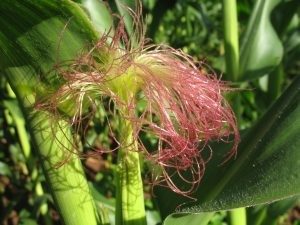
A Cornucopia of Categories for Crops
by Amber Kerr, July 21, 2016
This article originally appeared on the USDA California Climate Hub
For those of us who are not agricultural experts, the different categories used to describe crops can be bewildering. Field crops. Row crops. Horticultural crops. Specialty crops. Vegetable crops. Cash crops. What are all these designations? Which ones are mutually exclusive, and which ones overlap?
In fact, it can be confusing for the experts, too. Some of these terms have ambiguous or disputed definitions. Some are used differently in the US versus in other parts of the world. And some are based on cultural preferences rather than on agronomic or botanical distinctions.
This post lays out some of the most common ways that the USDA groups and describes crops. Although it is not definitive, we hope that it will be a useful brief reference for anyone new to this topic.
Annual crops vs. perennial crops
This is a fairly straightforward distinction: annual crops are those that must be replanted every year (such as corn and sunflowers), whereas perennial crops are those with a multi-year lifespan (such as almonds and oranges). Most vegetables, grains, and oilseeds are annuals, whereas most fruits are perennials. Some crops that are really perennials (such as strawberries) or biennials (such as carrots and cabbage) are, in practice, treated as annuals and replanted every year to maximize yields.
Field crops vs. specialty crops
This distinction is unique to the USDA: specialty crops are defined as fruits, nuts, and vegetables (including floriculture and nursery plants), while field crops are everything else (grains, dry legumes, oilseeds, fiber crops, and hay). This can lead to some unexpected dichotomies: for example, green beans are a specialty crop, while dried beans are a field crop. Walnuts are a specialty crop, while peanuts are a field crop (because they’re dry legumes). Sunflowers grown for oil are a field crop, while sunflowers grown for the floral industry are a specialty crop. And, although you probably think of potatoes as vegetables, the USDA categorizes all potatoes (including sweet potatoes) as field crops.
Agronomic crops vs. horticultural crops
This is a less common terminology for making the same distinction as field crops vs. specialty crops, above. Agronomic crops are generally non-perishable crops such as grains, dry beans, oilseeds, and fiber, while horticultural crops are fruits and vegetables, mainly grown for their “contribution to the flavour and interest of food and for the supply of minor but essential nutrients.”
Row crops
Some non-technical dictionaries simply define “row crop” as “a crop planted in rows,” but almost all commercial crops – from delicate baby lettuces to massive olive trees – are grown in rows. In practice, the term “row crop” usually refers to annual crops that are mechanically harvested on a large scale. This makes it roughly synonymous with field crops / agronomic crops, but not exactly: “row crop” can include some mechanically harvested annual specialty crops (such as tomatoes and onions). Note that perennial orchard crops such as grapes and almonds are never referred to as row crops, even when grown in rows and mechanically harvested.
Fruit vs. vegetable crops
Botanically, a fruit is the mature reproductive part of a plant (containing seeds), while a vegetable can be any other part of the plant, such as leaves, stems, roots, or tubers. However, USDA uses colloquial definitions: tomatoes, eggplants, peppers, and squash (even melons!) are all classified as vegetables by USDA’s National Agricultural Statistics Service (NASS), even though they are botanically fruits. Nearly all “vegetables” are annuals and nearly all “fruit” are perennials, with the notable exceptions of strawberries (an annual fruit) and asparagus and artichokes (perennial vegetables).
Cash crops and commodity crops
A cash crop is simply a crop that is sold for cash, and a commodity crop is a cash crop that is traded on a large scale (usually globally). In the realm of international agricultural development, “cash crop” is often contrasted with “staple crop” or “subsistence crop” – i.e., a crop that a farmer grows for her own family’s sustenance. However, in the United States where nearly all farm output is sold rather than directly consumed by the farm family, you’re more likely to hear “cash crop” contrasted with “cover crop,” i.e., a crop that is primarily grown to improve the soil, not to be sold for a profit.
One final fact: Trees as crops
Trees and forests managed for timber are not considered crops by USDA (though felled orchards may produce salable wood as a byproduct). The only timber trees that appear in the NASS agricultural statistics are fresh Christmas trees, which are classified as a nursery crop. (In 2009, the most recent year for which NASS data are available, sales of cut Christmas trees totaled more than $250 million – that makes them a bigger player than many other specialty crops, such as asparagus or kiwifruit.)
Are there any other crop classifications or definitions you’d like clarified? Please let us know and we can discuss them in a future post!














